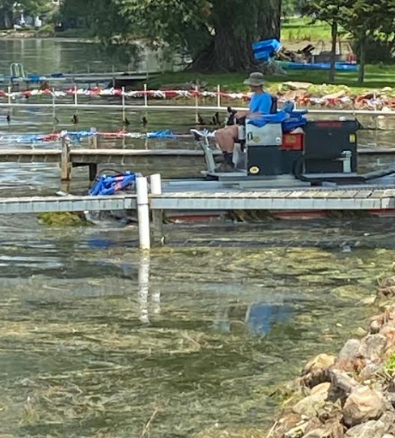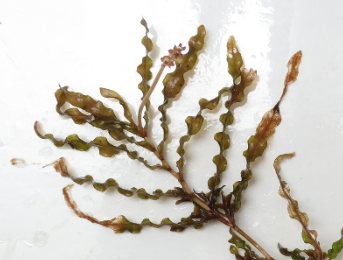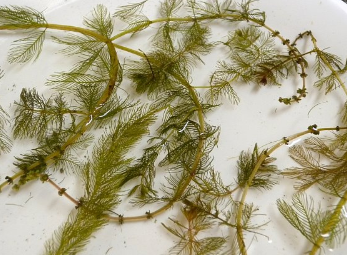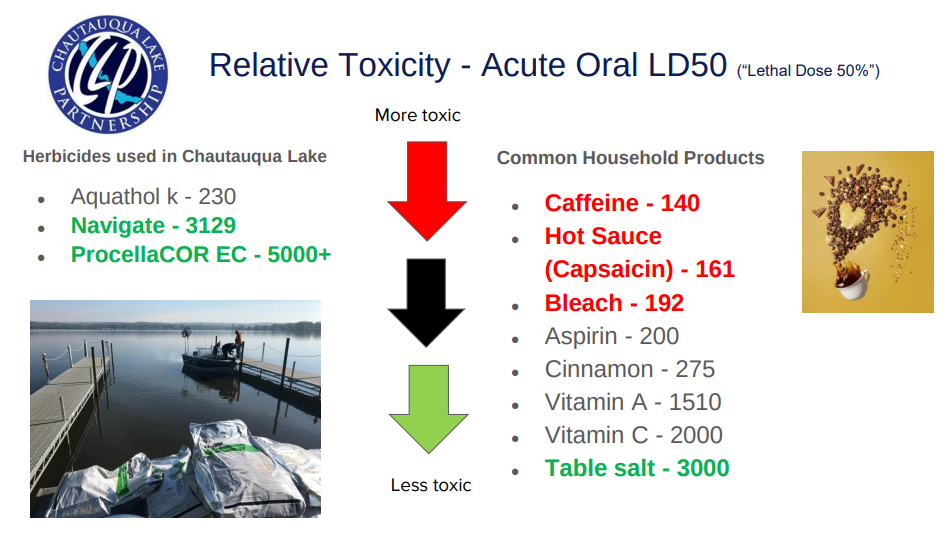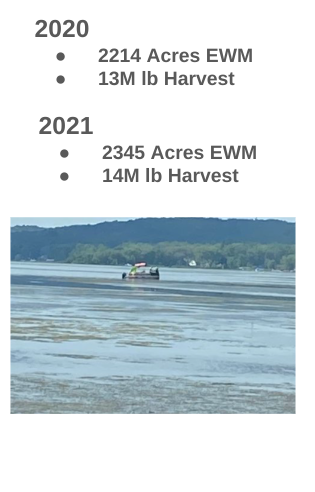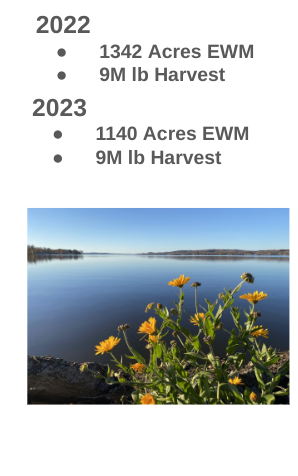Benthic Barriers – These are similar to landscape fabric placed on the lake bottom; they are not selective (kill everything underneath) and not practical for large areas
Biological/Milfoil weevils – No proven successes, stocking company went out of business
Hand-pulling & DASH (Diver assisted suction harvesting) – Not efficient or cost effective for large areas
Mechanical Harvesting – CLA capacity is limited
- 2.5 acres/day x 6 harvesters x 5 days = 75 acres/week
- Cut milfoil typically re-grows to the surface within 6 weeks
- 6 weeks x 75 acres = 450 acres (Best Case Scenario)
- The CLA operational season is typically 12-13 weeks, so only 450 acres can be cut 2x over the entire season, then will continue growing into the fall
- For context, the Chautauqua Lake littoral zone is about 4000 acres, and has had up to an estimated 2345 acres of milfoil infestation (2021)




